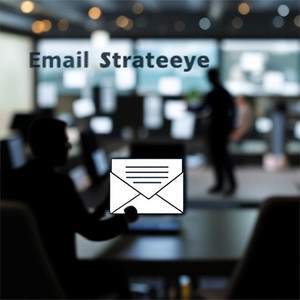In today’s digital-first world, email marketing remains one of the most effective tools for building relationships and driving business growth. While social media and paid ads are useful, email allows you to connect directly with decision-makers in a professional setting. For businesses targeting other businesses, mastering email strategies that drive B2B sales is essential.
This article explores proven methods to create impactful email campaigns that boost engagement, build trust, and close deals.
Why Email Still Works in B2B Sales
Despite the rise of newer channels, email continues to dominate B2B communication. Here’s why:
-
Direct Access: Emails reach prospects where they check daily—their inbox.
-
Cost-Effective: Email offers high ROI compared to other marketing tactics.
-
Personalization Opportunities: Campaigns can be tailored to industries, roles, or pain points.
-
Trackable Performance: Open rates, CTRs, and conversions provide measurable insights.
When done right, email marketing becomes a powerful driver of business sales and long-term client relationships.
1. Segment Your Audience for Relevance
The first rule of email strategies that drive B2B sales is segmentation. Not all prospects are the same. A CEO, marketing director, and IT manager may each look for different value points.
Segmentation allows you to:
-
Tailor content by industry or company size.
-
Create role-specific messaging.
-
Send emails based on buyer’s journey stage.
For example, send product demos to prospects in the consideration phase and case studies to decision-makers.
2. Personalize Beyond the First Name
Personalization goes far beyond saying, “Hello John.” Instead, demonstrate that you understand their business challenges.
Tactics include:
-
Mentioning industry-specific pain points.
-
Referencing recent company achievements.
-
Recommending solutions based on their role.
For instance: “We noticed your company recently expanded. Here’s how our software helps businesses scale seamlessly.”
This kind of personalization boosts open rates and builds credibility.
3. Use Compelling Subject Lines
Your subject line determines whether your email gets opened or ignored. In B2B, clarity and value often beat flashy gimmicks.
Best practices:
-
Keep it short (under 50 characters).
-
Highlight a benefit (“Cut IT Costs by 30%”).
-
Add urgency (“Exclusive Report Available Until Friday”).
-
Avoid spammy language.
A subject line is your first impression—make it worth clicking.
4. Provide Value with Every Email
B2B buyers receive dozens of pitches daily. To stand out, deliver value consistently. Each email should answer: “What’s in it for them?”
Examples of value-driven content:
-
Industry insights.
-
Case studies and success stories.
-
Free templates, tools, or reports.
-
Invitations to webinars or events.
When prospects see your emails as genuinely helpful, they’re more likely to engage with your business.
5. Leverage Automation and Sequences
Manually sending every email isn’t scalable. Automation allows you to deliver the right message at the right time.
Popular B2B email sequences include:
-
Welcome series for new subscribers.
-
Lead nurturing sequences to build trust.
-
Re-engagement campaigns for inactive leads.
-
Event follow-ups to keep momentum going.
Automation ensures consistency while freeing your sales team to focus on conversations that matter.
6. Align Emails with the Buyer’s Journey
Each stage of the buyer’s journey requires different messaging:
-
Awareness: Share blog posts, reports, and educational content.
-
Consideration: Provide case studies, product comparisons, and guides.
-
Decision: Use free trials, demos, or personalized offers.
Mapping your emails to this journey ensures relevance and keeps leads moving closer to conversion.
7. Include Strong Calls to Action (CTAs)
Every email should guide prospects toward a next step. Effective CTAs are clear, actionable, and benefit-driven.
Examples:
-
“Download the full case study.”
-
“Book a 15-minute strategy call.”
-
“Claim your free demo today.”
A well-placed CTA helps convert interest into measurable sales opportunities.
8. Test and Optimize Your Campaigns
Continuous improvement is key. Regularly test elements of your emails to see what resonates.
Test variables include:
-
Subject lines.
-
CTA wording.
-
Email length.
-
Sending times.
Analyzing metrics such as open rates, CTR, and conversions helps refine strategies and maximize results.
9. Combine Email with Other Channels
For the best results, integrate email with your broader B2B marketing strategy. For instance:
-
Follow up email campaigns with LinkedIn outreach.
-
Use retargeting ads to remind leads about email offers.
-
Add SMS or calendar invites for event promotions.
This multi-channel approach reinforces your message and keeps your brand top of mind.
Final Thoughts
Email is far from outdated—it remains a powerful driver of B2B sales when executed strategically. By focusing on segmentation, personalization, automation, and delivering real value, businesses can create campaigns that build trust and drive revenue.
Implementing these email strategies that drive B2B sales ensures your business not only captures attention but also converts prospects into long-term clients.
If you’re ready to take your email marketing to the next level, start small, test continuously, and refine your approach. Over time, these strategies will pay off in stronger relationships and consistent sales growth.
Also, you can learn more about Subscribers into Buyers with Funnels here.
